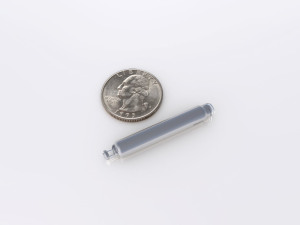by
Lauren Dubinsky, Senior Reporter | July 05, 2018

Will they become the new standard?
Not only do leadless pacemakers eliminate the need for wires that stretch from the shoulder vein to the heart — a new Cleveland Clinic study found they are associated with fewer complications.
“The overwhelming majority of traditional pacemaker complications are related to the leads or the surgical pocket for the pulse generator,” Dr. Daniel Cantillon, lead author of the study, told HCB News. “Leadless pacemakers have neither, and were designed to eliminate those problems by allowing the very small device to be introduced directly into the human heart.”
Previous research uncovered that up to 12 percent of patients who receive conventional pacemakers experience complications.
The first leadless pacemaker was approved by the FDA in 2016. It’s approximately 10 percent of the size of a traditional pacemaker and is placed directly into the heart via a catheter that passes through the femoral vein in the leg.
For the study, Cantillon and his team compared short- and mid-term complications between 718 patients who received the Nanostim leadless pacemaker and 1,436 patients with conventional pacemakers.
The leadless pacemaker patient data came from the LEADLESS II trial and the conventional pacemaker patient data was taken from Truven Health MarketScan claims databases between April 2010 and March 2014.
At the one month mark, the researchers found that patients who received the Nanostim leadless pacemaker had fewer complications overall — 5.8 percent compared to 9.4 percent. Complications among the conventional pacemaker group included lead complications, pocket complications and infection.
There were no notable differences between the groups with regard to vascular complications, electrode dislodgment and generator complications.
However, the patients with leadless pacemakers did have a higher risk of developing pericardial effusions. Although this complication is uncommon, it is serious and sometimes requires surgery.
At the 18-month follow-up mark, patients with leadless pacemakers continued to experience fewer complications overall than those with the conventional option.
Cantillon expects the complications associated with leadless pacemakers to continue to decline as the technology improves and physicians gain more experience with implanting them.
“Current leadless pacemakers only serve a limited number of patients requiring single-chamber ventricular pacing,” he said. “This limits the population that qualifies to about 10 percent of the U.S. population requiring a pacemaker. However, this could expand in the next few years as future generations of this technology are studied.”
Back to HCB News
